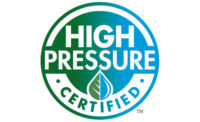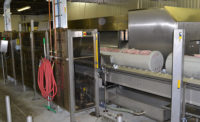High-pressure processing has been used in many areas across the food industry to help extend shelf life and improve food safety. As the use of HPP has increased in the food industry, the Cold Pressure Council formed about four years ago to standardize and promote its usage.
“The group came together because we really want to standardize the use of HPP, to ensure that it was being done properly, following the right guidelines,” explains Jeff Williams, CEO of Universal Pure and CPC Chairman. “Along that vein, the group has created a set of guidelines for each product category. There are guidelines for juice, there are guidelines for proteins, for dips and sauces. It outlines the proper use of HPP to make sure the food is handled correctly, is processed safety and ultimately is going to be good for the consumer.”
For companies who HPP products for other food companies (called tollers), the COVID-19 pandemic has been a boom time. As the restaurant business in the United States collapsed, more shoppers bought retail products. Companies that reach the retail market utilized tollers – if they did not have their own HPP equipment – to include extra food safety measures in their products. Read an article about a Texas toller and their pandemic workload here. Now that the foodservice industry is beginning to come back, tollers and processors will be able to service both sides of the industry.
Consumers, though they may appreciate the benefits of HPP technology, may not necessarily understand the process.
 Jeff Williams, Sam Mugdal and Lisa Wessel of the Cold Pressure Council.
Jeff Williams, Sam Mugdal and Lisa Wessel of the Cold Pressure Council.“In the juice industry, the nomenclature of “cold-pressed” is synonymous with HPP. They don’t necessarily know that cold-pressed equals HPP, but they know that “cold-pressed” means it’s safe,” says Lisa Wessel, chief marketing officer of JBT Avure, which is a member of the CPC.
“In the beginning, the meat processors were afraid to use the high-pressure processing verbiage, because processed foods has a negative connotation, and they were afraid that people might think of high-pressure processing in a negative way. So they kind of shied away from it initially,” she adds.
Williams says that the CPC has adopted a “High Pressure Certified” seal that qualified companies can include on the labeling of their products. Williams says that brands, including some high-profile ones, will include it on their packages.
“That’s the beginnings of showing that the product has been processed correctly, and the beginnings of how consumers might see what HPP might give them,” he adds.
HPP also has strong growth potential in the international market. Williams said that the CPC annual conference, held this past October during Pack Expo, saw increased interest in companies in Europe and Asia, and elsewhere.
Sam Mugdal, global product developer for JBT Avure, said that companies in the United States and Europe went through a long process of thermal pasteurization before adopting to HPP.
“I’m seeing in those developing countries, people want to make that leap forward early on and see if this technology can help with some of their consumer demands,” he says.







